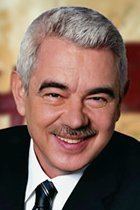17 October 1999 2003 → 6 March 1999 19 September 1978 34 seats, 24.9% 60 seats, 40.9% | Registered 5,293,657 4.2% 19 September 1978 28 September 1996 | |
 | ||
Turnout 3,133,926 (59.2%)
4.4 pp | ||
The 1999 Catalan parliamentary election was held on Sunday, 17 October 1999, to elect the 6th Parliament of Catalonia, the regional legislature of the Spanish autonomous community of Catalonia. At stake were all 135 seats in the Parliament, determining the President of Catalonia.
Contents
Electoral system
The 135 members of the Parliament of Catalonia were elected in 4 multi-member districts, corresponding to Catalonia's four provinces, using the D'Hondt method and a closed-list proportional representation. As the community did not have an electoral law of its own passed into law at the time of the 1999 election, the electoral system came regulated under the community's Statute of Autonomy rules, and subsidiarily, under the Spanish general electoral law (Organic Law 5/1985, of the General Electoral Regime). As a result of the lack of an autonomous electoral law, seats were allocated to districts through specific Laws or Decrees for each election. For the 1999 election, seats were distributed as follows: Barcelona (85), Girona (17), Lleida (15) and Tarragona (18).
Voting was on the basis of universal suffrage in a secret ballot. Only lists polling above 3% of valid votes in each district (which includes blank ballots—for none of the above) were entitled to enter the seat distribution.
Background
Afterwards of 19 years of a Convergence and Union government, this elections expected a big change in a Catalonia Government.
In the past 1995 elections, Convergence and Union lost the absolute majority, but in the parliament voting it was won, because the People's Party of Catalonia and the Socialists' Party of Catalonia abstained in the voting.
In the 1995 elections Initiative for Catalonia Greens and Socialists' Party of Catalonia were to run separately, but in this election formed a party coalition, except in Barcelona.
Parties
Vote
Poll results are listed in the table below in reverse chronological order, showing the most recent first, and using the date the survey's fieldwork was done, as opposed to the date of publication. If such date is unknown, the date of publication is given instead. The highest percentage figure in each polling survey is displayed in bold, and the background shaded in the leading party's colour. In the instance that there is a tie, then no figure is shaded. The lead column on the right shows the percentage-point difference between the two parties with the highest figures. When a specific poll does not show a data figure for a party, the party's cell corresponding to that poll is shown empty.
Seat projectionss
Opinion polls showing seat projections are displayed in the table below. The highest seat figures in each polling survey have their background shaded in the leading party's colour. In the instance that there is a tie, then no figure is shaded. 68 seats were required for an absolute majority in the Parliament of Catalonia.
